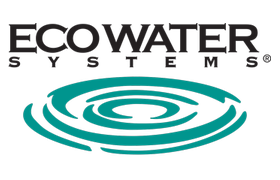Does Reverse Osmosis Remove Fluoride?

When thinking about treating the drinking water in your home to improve its quality, you may wonder, “Does reverse osmosis remove fluoride?” And should it?
Fluoride is a naturally occurring mineral that is found in soil, water, plants, and food. It’s added to toothpaste and other dental products to prevent tooth decay. But there’s a reason that toothpaste comes with the warning, “Do Not Swallow.”
You should not ingest excessive amounts of fluoride. (More about that in a minute.)
Fluoride is just one of many minerals commonly found in drinking water that many people would rather remove to make it cleaner and healthier for themselves and their families. And a popular way to remove these minerals is reverse osmosis.
What is Reverse Osmosis?
Reverse osmosis is a water purification process that uses a semipermeable membrane to remove impurities from water. It works by applying pressure to the water, forcing it through the membrane and leaving contaminants behind.
Reverse osmosis is effective at removing a wide range of impurities, including minerals, salts, and certain chemicals.
Does Reverse Osmosis Remove Fluoride?
Yes, reverse osmosis is known to be highly effective at removing fluoride from water. The semipermeable membrane used in the reverse osmosis process has pores small enough to block fluoride ions, ensuring they are separated from the purified water.
This makes reverse osmosis a popular choice for individuals and households concerned about fluoride levels in their drinking water.
Acceptable Levels of Fluoride in Drinking Water
While fluoride is commonly added to municipal water supplies to promote dental health, excessive fluoride levels can be a concern.
The recommended level of fluoride in drinking water, set by the U.S. Environmental Protection Agency (EPA), is in the range of 0.7 to 1.2 milligrams per liter (mg/L). This range is considered optimal for preventing tooth decay without posing a risk of dental fluorosis or other health issues.
The official standard for the maximum fluoride allowable in public drinking water systems is 4.0 mg/L.
Dangers of Too Much Fluoride in Drinking Water
There are health dangers associated with too much fluoride in drinking water, which can result from ingesting too much of it. The dangers include:
- Dental Fluorosis: Excessive fluoride intake during tooth development can lead to dental fluorosis, a cosmetic issue that affects tooth enamel. It can manifest as discoloration, pitting, or staining of the teeth.
- Skeletal Fluorosis: Prolonged exposure to very high levels of fluoride, typically above 10 mg/L, can lead to skeletal fluorosis. This condition affects the bones and joints, causing pain and limiting mobility.
- Neurological and Cognitive Effects: Some studies have suggested a possible link between high fluoride levels and adverse effects on neurological development and cognitive function, especially in children. However, further research is needed to establish conclusive evidence.
Symptoms of Fluoride Overdose
While it’s rare to experience fluoride overdose through drinking water alone, symptoms may include:
- Nausea and vomiting
- Abdominal pain
- Diarrhea
- Drooling
- Headache
- Irregular or slow heartbeat
- Convulsions (in severe cases)
- Cardiac arrest (in severe cases)
Get a Free In-Home Water Test
To ensure that your drinking water meets the recommended fluoride levels, we encourage you to schedule a free in-home water test.
Knowing the fluoride content in your water is crucial for making informed decisions about water treatment options. Our experts can assess your water quality, including fluoride levels and many other contaminants, and provide tailored recommendations to ensure the safety and purity of your drinking water.
Click here to schedule a free in-home water test, courtesy of EcoWater of Central California.
In the meantime, to learn more about Home Water Filtration Systems, check out our Frequently Asked Questions Page.
